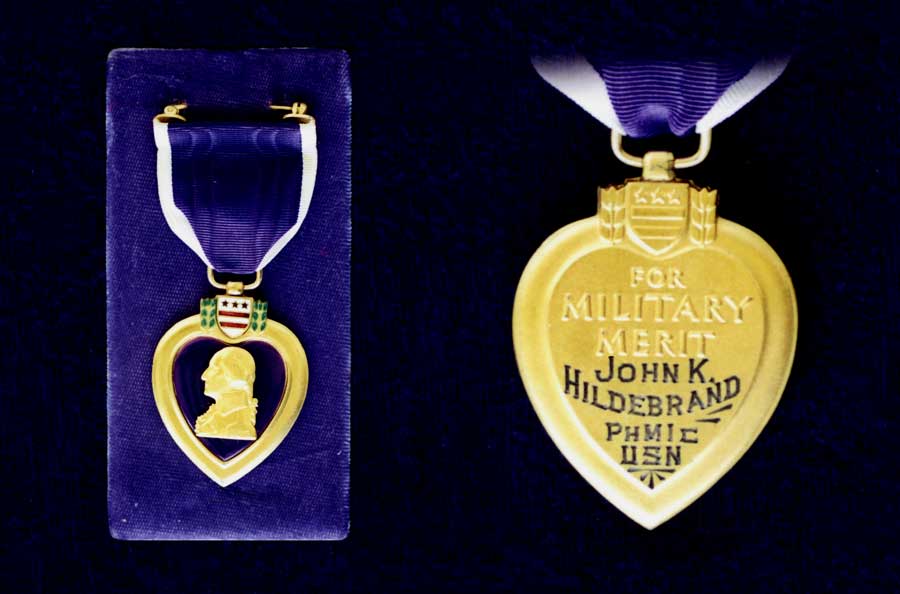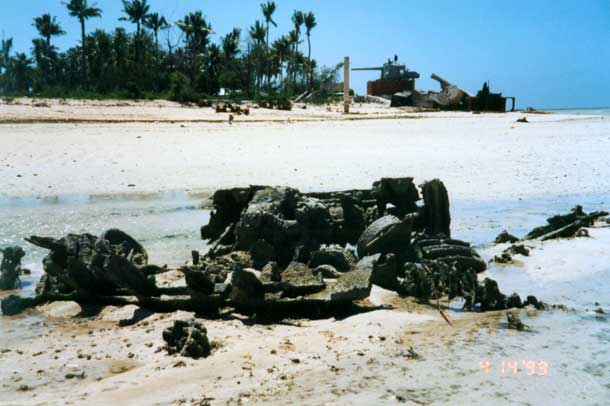 |
 |
 |
 |
HOW THE MEN DIED
THE STORY OF THE LT
1/ 6
LANDING ON GREEN BEACH
21 NOV 1943
|
On 21 NOV 1943,
the invasion of Tarawa was in its second day. The 1st Battalion, 6th Marines (1/6)
were waiting aboard the USS
FELAND, as part of
the Corps Reserve. After heavy fighting, Marines already ashore had succeeded in
capturing a strip of land along the west coast of Betio Island
to a depth of about 100 to 150 yards. The beach along this section of shoreline is
identified on military maps as Green Beach. 1ST BATTALION
6TH MARINES The 1/6 specialized in making
landings in small rubber boats known as LCPRs
(Landing Craft, Personnel Rubber). The USS FELAND had stopped for a few days in the
New Hebrides islands to practice these landings, on its way from
New Zealand to Tarawa. TWO LVTs ACCOMPANY Two LVTs (Landing Vehicle, Tracked),
along with their three-man crews, had been aboard the USS FELAND
since it left New Zealand. Both of these LVTs were of the first model type, the LVT(1), commonly known as an Alligator. The
crews of these two LVT(1)s were Marines from B Company, 2nd Amphibian Tractor Battalion. LCVPs DROP MARINES
AT THE REEF The LCVPs began dropping the 1/6 Marines, and their rubber boats, at the edge of the inner reef, about 600 to 1000 yards out from the beach itself. The Marines paddled their way in, until it became shallow enough to wade in the water. At that point many of the Marines got out of their rubber boats and (leaving their gear inside) pushed them on toward the beach. FIRST LVT RESCUES MEN ON RUBBER BOAT On the way to the beach, the leading LVT (driven by Cpl. Howard Bryant) came upon a rubber boat that was going flat and sinking. He stopped and took onboard at least seven of these men. The men have been identified as: 2Lt. Marius W.
CHRISTENSON
Cpl. Howard L.
BRYANT
THE FIRST LVT HITS JAPANESE BOAT-MINE When the LVT had continued toward
the beach for about 200 yards, it struck a large Japanese
boat-mine. The huge explosion destroyed the LVT,
and blew the heavy vehicle over onto its top.
THE SECOND LVT STOPS AT THE WRECKAGE The second LVT soon arrived at the scene of the explosion. PhM3c Clinton L. HOATSON Jr. was loaded aboard and transported to Green Beach. The crewmembers of the second LVT were all from B Company, 2nd Amphibian Tractor Battalion, and have been identified as: Sgt. William R. SMILEY Cpl. Howard GAVIGLIO Cpl. Frederick F. CURZAN
Sgt. William R. SMILEY was badly wounded by the bomb explosions, and was near death for a considerable period of time afterward. (Read Sgt. Smiley's story here) WHO ARE THE MISSING CREW MEMBERS? The LVT that hit the mine was being driven by Cpl. Howard Bryant, but there should have been a three-man crew. Who were the other two? Were there any other passengers on the LVT? The answers to these questions continue to evade me, despite my best efforts... Jim Hildebrand 07 AUGUST 2009 |
PLEASE CONTACT ME IF YOU HAVE ANY KNOWLEDGE
OF THESE MEN OR EVENTS